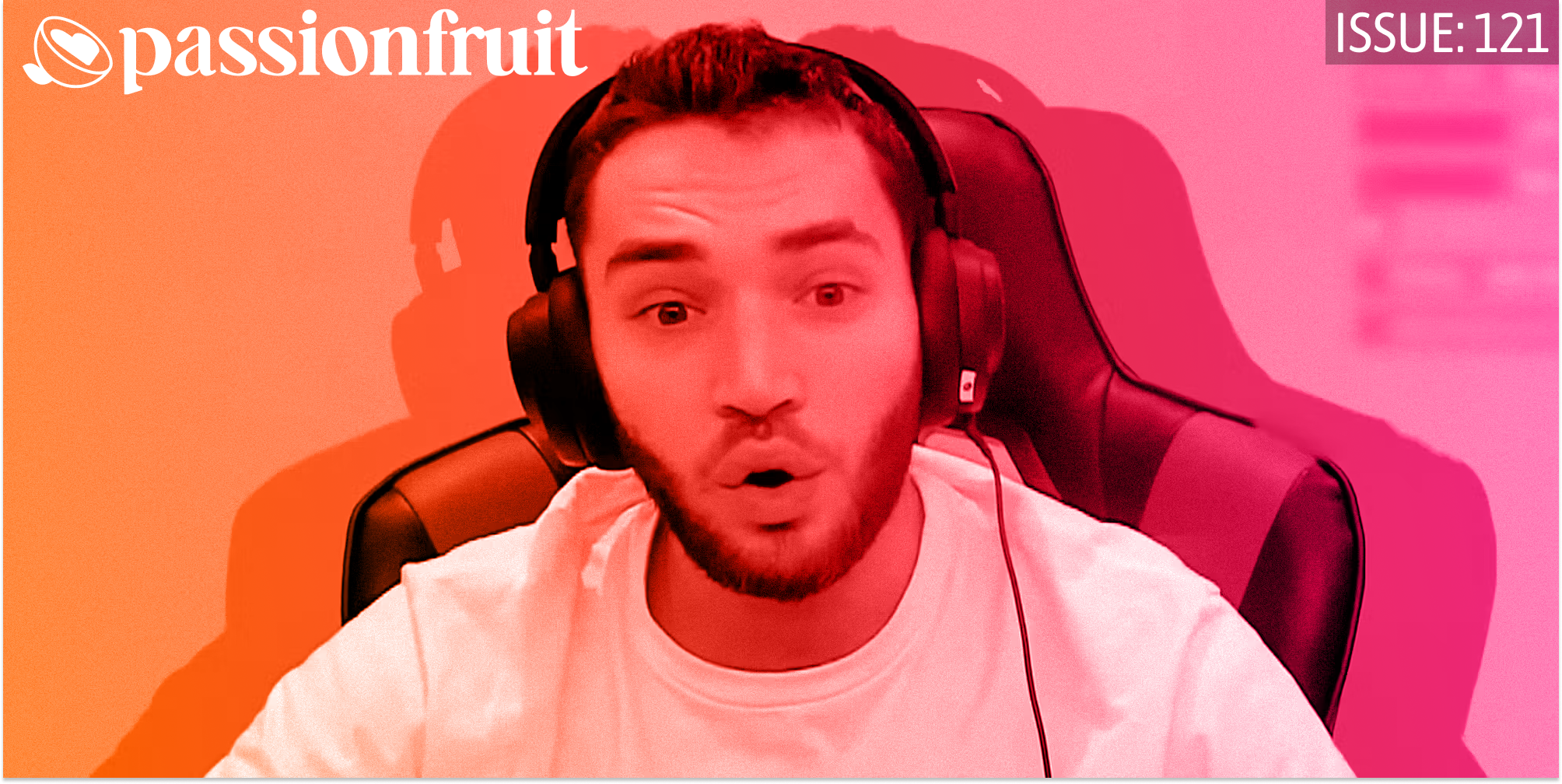CREATOR NEWSLETTER
Issue #206 | January 25, 2024
Deja-tube: no, it’s not the weird feeling one gets while watching Doja Cat’s “Demons” video. It’s the uncanny sensation after seeing a YouTube ad in clear, flagrant defiance of the platform’s policies show up on one channel and suddenly seeing it everywhere.
Whether it’s fleshlights, celebrity AI-generated Medicaid scams, MAGA conspiracy theories, government-funded warnings about opioid abuse, or the stars of “Broad City” talking about their poop (for two minutes!!!); only the algorithm determines what content gets in front of what eyeballs. It is a black box for creators, who do not get to determine which ads will generate for someone watching their channel. A viewer can end up seeing a certain type of commercial over and over again, across multiple channels, as long as they fit the correct demographic the ad is targeting.
So it’s officially up to viewers to flag certain ads as being problematic, and celebrities to raise awareness after their likeness is used by an AI commercial because whatever screening process (if any) YouTube uses for advertisers appears to be singularly focused on format, not content.
Fundamentally, this is a broken model: it’s not how TV ad works, it’s not how media ad works, hell, it’s not even how Google AdSense works. And Google owns YouTube! Advertisers are vetted, even in the race for the bottom-of-the-barrel that is internet bucks.
THE COMMENTS SECTION
“YouTube just gave me an ad for student accommodation followed by an ad for static caravans, which makes me wonder what the hell I’ve done to its algorithm.”
– X user Gary Bainbridge (@Gary_Bainbridge) on YouTube’s ad algorithm.
As Passionfruit’s publisher James Del said, “The only thing in digital advertising that could impact this (but prob won’t) is that Google is killing the 3rd party ad cookie, meaning it’ll be a lot harder for brands to target users based on their browsing behavior.” And it’s doubtful YouTube will be going in the same direction.
In August of last year, the ad transparency and quality service Adalytics conducted an independent audit, which appeared to show the platform in violation of its own policies regarding ad placement in children’s content. According to the independent report: “Google’s Performance Max (“Pmax”) ad targeting algorithm appears to be placing adult brands’ ads on “made for kids’ YouTube channels; advertisers report they cannot audit this issue because Pmax does not provide them with granular placement reports.” (Not to mention the whole “mining the collection of children’s private data” issue, which is a whole different story.)
Meanwhile, none of the creators we spoke to said they get to determine what ads are shown on their channels. Passionfruit has its own verified channel now (thanks subs!), and were unable to locate any advertising moderation tools from the creator end.
And that’s…really messed up, if you think about it. If marking your content as safe for children doesn’t guarantee that your video won’t end up hosting an ad using copyrighted footage to sell sex toys, then what was that whole Adpocolypse thing about in the first place? Why did YouTubers end up seeing their revenue per view drop precipitously in 2017, and then again in 2018, and again in 2019, if not to protect the children?
It’s clear that while one set of strictly upheld content guidelines apply to creators, they are not being applied to advertisers. Take, for example, YouTube’s approach to AI: users must label it, but advertisers are free to promote deepfakes until it violates MrBeast or Taylor Swift’s intellectual property rights. Basically: if you try to monetize content on YouTube, you’ll be held to a set of standards that does not apply to anyone advertising on your channel.
And it’s only going to get worse: YouTube already announced in October of last year a slate of new tools to help advertisers grow their reach without expending extra budget. Their new Spotlight Moments literally uses an AI-generated algorithm to help advertisers capitalize on major cultural events. “Brands will automatically appear alongside the most relevant and engaging content associated with the moment,” read the official blog post from Google. So expect to see, as I did recently, a bunch of pro-Israel spots because one time you let the entire ad play through just to confirm you weren’t hallucinating.
So while we’re busy playing Whac-A-Mole with specific YouTube ads that hit a cultural saturation point of egregiousness, just about anyone can spend a few bucks and tap their product or point of view directly into the cultural zeitgeist. And who loses out the most? Arguably it’s the viewer, who can only expect an uptick in fake spam advertisements (as well as possible buffering issues) if they dare to use an ad blocker.
So what I’m saying is maybe…time to do a reverse adpocolypse? Maybe? Or at least compel YouTube to disclose what guardrails, if any, are in place to stop inappropriate or misleading ads from being shown on your channels. You know, the same way they demonetized and devalued your content when advertisers threatened to leave.
At least, let’s give it a good think.
– Drew Grant, Editorial Director
NOTED BY LON HARRIS
2024 is the Influencer Election
The era of creators not getting political is over.
By Lon Harris, Passionfruit Contributor

SPONSORED

There are only 3 spots left to explore the Faroe Islands with fellow travel creators, where you’ll be able to learn, collaborate, explore, and capture one of the most stunning places on earth. Book now on Moment.
IN THE BIZ
- X has enabled passkey log-ins on iPhones and iPads, allowing all members, not just those with Premium status, to use the security feature.
- Adobe Creative Suite’s settings potentially enable Adobe to use user-generated content for AI training, raising issues about consent and artists’ rights in the AI era.
- TikTok is testing a new feature allowing 30-minute video uploads, a significant shift from its traditional short-form format and a move towards direct competition with YouTube’s long-form content space.
- Following a beta test last year, BeReal is bringing back its RealPeople feature on Feb. 6, which will allow influencers and notable figures to create official accounts and engage with fans.
- Blizzard Entertainment announced major changes to Overwatch Esports, introducing the Overwatch Champions Series, an international competitive circuit open to various regions.
- Twitch has updated its creator payout structure, introducing significant changes like allowing Affiliates to join the Plus Program, removing the $100K cap on certain revenue shares, and transitioning Prime Gaming subscriptions to a fixed rate model based on the subscriber’s country.
LABOR
The Gilded Age of the Creator Economy Has Come to an End
Big tech led creators to a new gilded age, and it seems to be reaching a tipping point.
By Steven Asarch, Passionfruit Contributor
PERSONALITIES
Here’s the Secret To Succeeding as a Creator, According to a New Course by YouTubers Colin and Samir
‘It’s a dream job, but it’s still a job.’
By Charlotte Colombo, Passionfruit Contributor
WHAT WE’RE WATCHING
- Stef Solari released the first part of her reaction to 2022’s “The Batman.”
- Cam&Zay watched the 2009 film “The Hangover” for the first time.
- Carol Reacts watched 1984’s “The Terminator.”
- MJoy4Fun reacted to the 2000 film “Shanghai Noon” for the first time.
YOUTUBE MADE ME DO IT
SesskaSays‘ reactions are delightful, and we loved her reaction to episode 1 of the latest MCU series “Echo.”

Copyright © 2024 Passionfruit, All rights reserved.
You are receiving this email because you signed up to get the latest tips, tricks,
and trends in the creator economy from Passionfruit.
Have an idea for our next big story or want to get featured? Email us at tips@passionfru.it
Don’t want to hear from us anymore?
Click here to unsubscribe
To view in your browser click here





